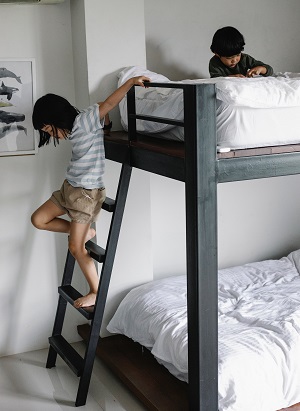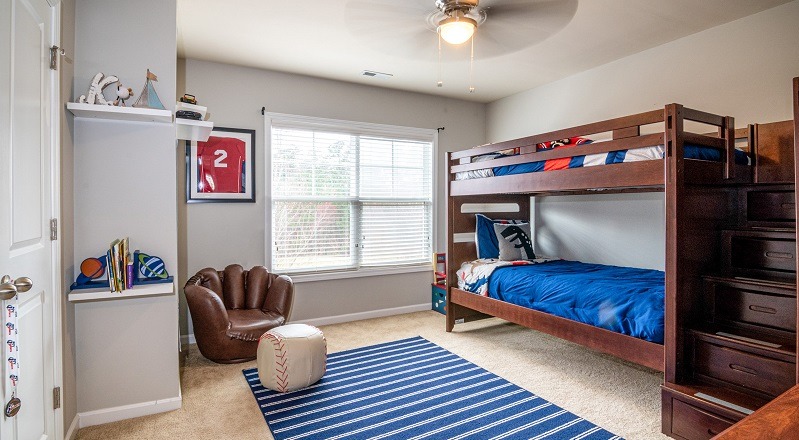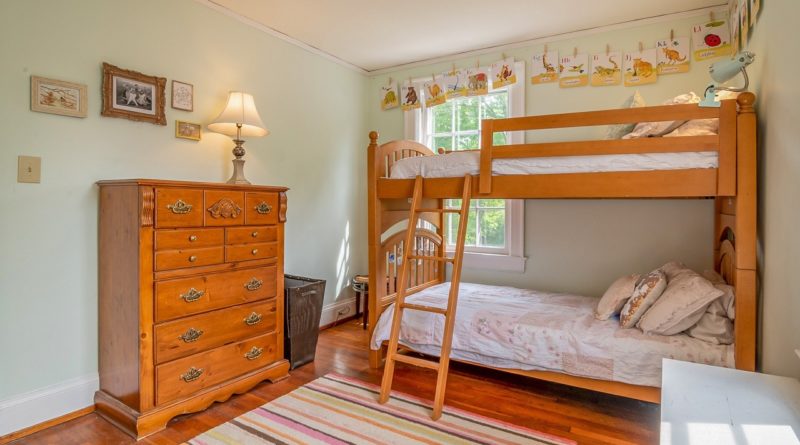Choosing Bunk Beds For Kids Under Ten
Selecting the right bunk beds for children under 10 years old is a decision that encompasses more than just saving space. It’s about crafting a safe, comfortable, and enjoyable sleeping environment that children will cherish. When exploring the vast array of bunk bed options, it’s essential to approach the process with a balanced perspective. Factors such as the age and size of the child, the layout of the room, and the quality of the bed itself all play significant roles.
Safety First
Safety is the foremost concern when selecting bunk beds for young children. It is crucial to opt for beds that adhere to the stringent British safety standards, which include robust guardrails and a stable, easy-to-climb ladder. Ensuring the product has undergone comprehensive safety testing gives parents peace of mind. It’s important to educate children about using the bunk beds safely – this includes rules like no playing on the ladder or the top bunk, and always using the ladder for getting up and down.
Besides these standards, parents should consider the design of the bed itself. The spacing between the bars of the guardrail, the sturdiness of the bed frame, and the absence of sharp edges or protruding parts are all critical factors.

Appropriate Age and Size
Bunk beds are an exciting prospect for many children, but they are not recommended for very young kids, particularly those under six years of age. The top bunk is generally suitable for children aged six and above, but this can vary depending on the individual child’s maturity and physical ability.
The size of the bed should also be appropriate for the child’s age and size. A bed that is too large can feel overwhelming for a younger child, while one that is too small can be uncomfortable. Additionally, the height of the bunk bed should be considered – a lower bunk bed can be safer for younger children, reducing the risk of falls.
Room Size and Layout
Before selecting a bunk bed, it’s essential to accurately measure the bedroom to ensure a suitable fit. There should be enough space not only for the bunk bed but also for other furniture items and play areas. The layout of the room also plays a significant role – the bed should be positioned away from windows, radiators, and light fixtures. Ample space around the bed is necessary for easy access and to prevent any feeling of confinement.
Durability and Quality
When it comes to bunk beds, investing in quality is investing in safety. Durable materials such as solid wood or reinforced metal not only ensure the bed withstands the test of time but also maintain its stability and safety. A bed with solid construction, good-quality joinery, and a stable base will offer peace of mind. It’s advisable to avoid beds that feel wobbly or have flimsy parts, as these can pose a risk over time.
Design and Aesthetics
The design of bunk beds has evolved significantly, offering a range of styles that can delight any child. From traditional to contemporary, the aesthetic choices are vast. When selecting a bunk bed, consider how its design complements the existing decor of the room. It’s also a wonderful opportunity to involve your child in the decision-making process, allowing them to express their personal style. Stylish kids bunk beds can be a central feature of a child’s bedroom, reflecting their personality and interests.

Storage and Functionality
Bunk beds with integrated storage solutions are a game-changer for keeping a child’s room tidy and organised. Drawers, shelves, or even cupboards built into the bed frame can provide much-needed space for storing clothes, toys, and books. This not only helps in maximising the available room space but also encourages children to keep their belongings organised. When selecting a bunk bed with storage, ensure that the drawers or doors are easy to operate and safe for children to use.
In addition to storage, some bunk beds offer convertible designs that can adapt to changing needs. These might include beds that separate into two singles, designs with flexible ladder placements, or even beds that transform into seating areas. Such functionalities add value to the bed over time, making it a versatile piece of furniture in a child’s bedroom.
Budget Considerations
While budget constraints are a reality for many families, it’s important to remember that a bunk bed is an investment in your child’s safety and comfort. There are options available across various price ranges that do not compromise on the essential aspects of safety and quality. It’s worth considering that a slightly higher initial investment in a good-quality bunk bed can be more economical in the long run, avoiding the need for early replacements or repairs.
Summary
Choosing the right bunk bed for a child under 10 is a task that requires thoughtful consideration of various factors. Safety, suitability, design, functionality, and budget all play crucial roles in the decision-making process. By prioritising these elements, parents can provide their children with a secure, comfortable, and delightful sleeping environment. A well-chosen bunk bed is more than just a piece of furniture; it becomes a cherished part of a child’s daily life, a space where they can rest comfortably, grow confidently, and dream big.






